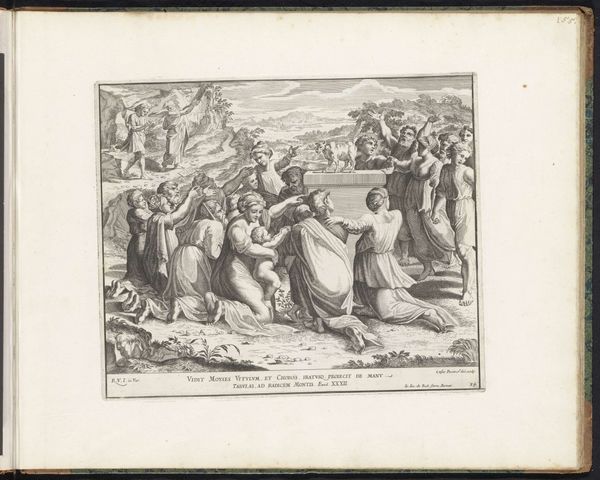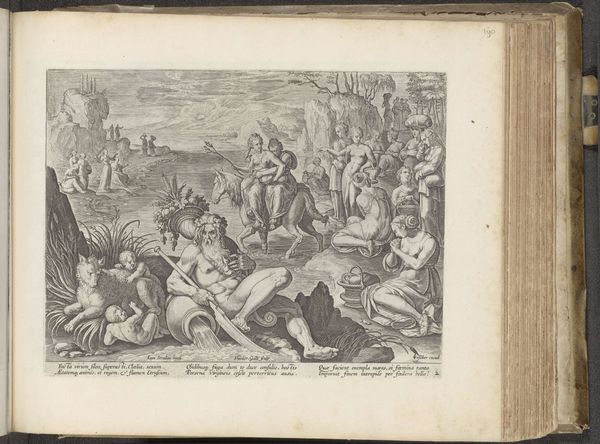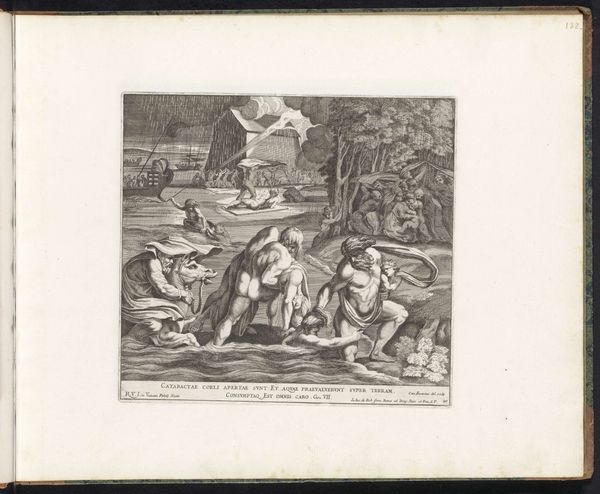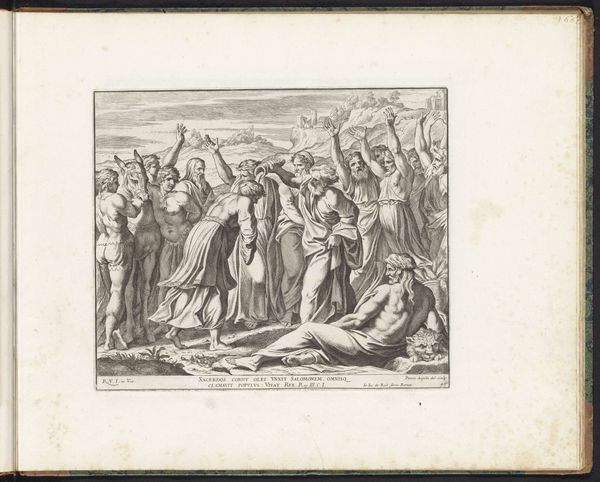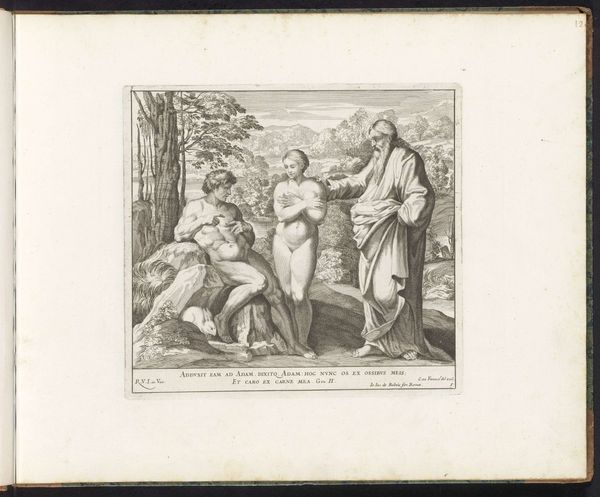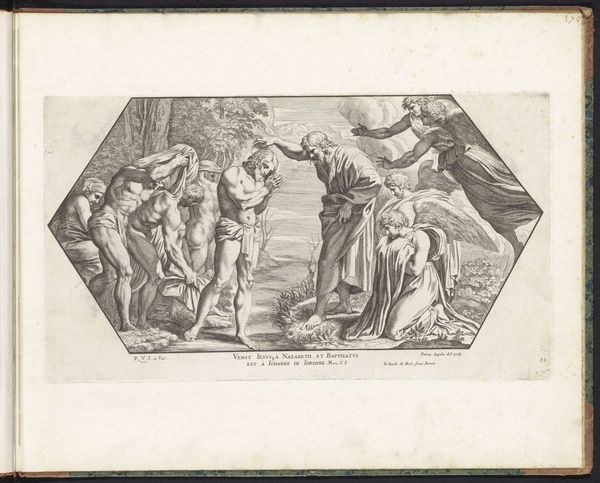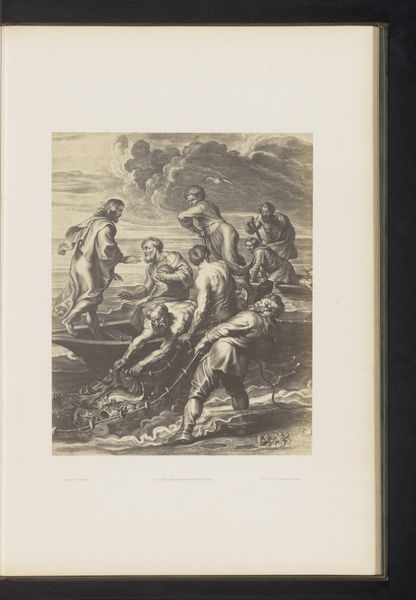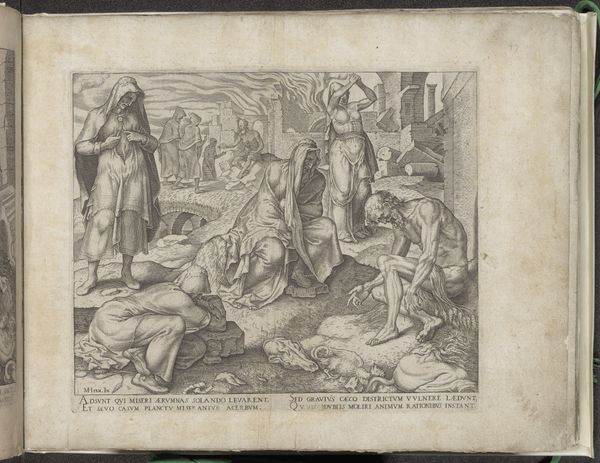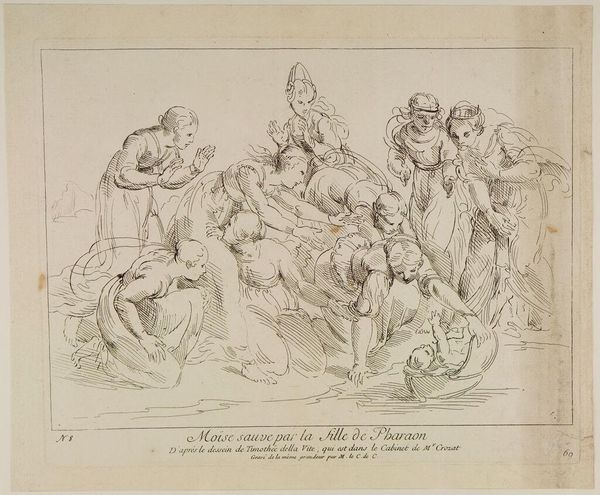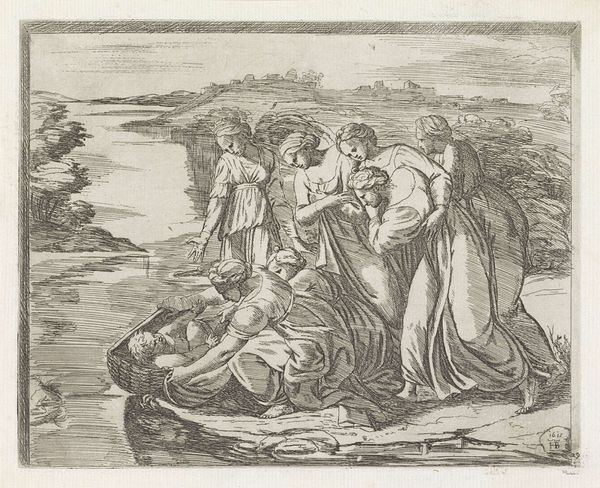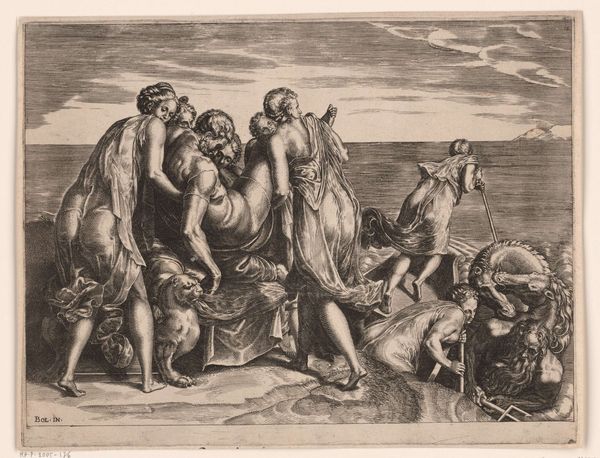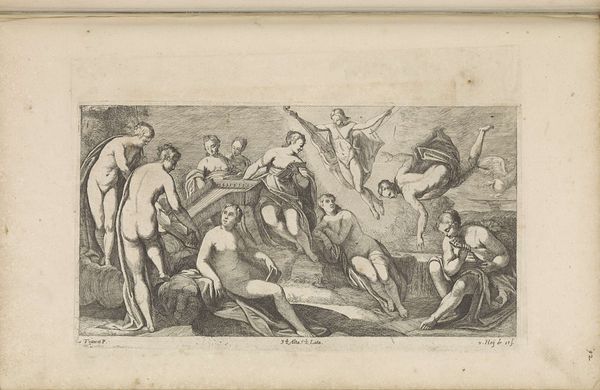
print, engraving
#
narrative-art
#
baroque
# print
#
figuration
#
history-painting
#
engraving
Dimensions: height 265 mm, width 286 mm
Copyright: Rijks Museum: Open Domain
Curator: What immediately grabs my attention in "Mozes wordt gevonden," an engraving from 1675, is the starkness of its making. You see the story, but how did they MAKE it? Editor: Indeed. It depicts the finding of Moses, created by Cesare Fantetti. I notice the intricate line work; it looks almost like a pen drawing but much more deliberate. What draws your eye specifically? Curator: Well, first consider engraving as a *process*. Lines aren't casually drawn. Each one required force, a specific tool, careful labor. What effect does the contrast created by those lines have? Editor: I suppose the high contrast emphasizes the drama of the moment. The figures pulling Moses from the water look frantic and their expressions even seem strained. But how much did social factors at the time impact his print-making technique and choices in terms of depicting the materials worn, and how people were depicted in the composition? Curator: That's a key insight! Who would've purchased such prints? The rising middle class. Engravings made art and Biblical narratives more accessible, creating a market where reproducibility became a virtue rather than a limitation of more expensive art, say painting or tapestry. Fantetti chose to make it, but he could not fully control who was buying and viewing his work in 1675. How do you feel about that notion? Editor: That shifts my perspective completely! Thinking about the art’s *journey* from creation to consumption helps understand not only its artistic merit, but also its cultural impact. Now the medium itself seems like part of the message. Curator: Precisely. By dissecting the process and production of art, and how a society influences the availability and consumption of images such as these, we see how "high" art like this engraving democratizes accessibility and ideas. Editor: Thank you, looking at the piece with an idea about art’s journey through materials and accessibility makes me look at art from the past in a brand new light! Curator: You've started to think like a Materialist! Keep interrogating that relationship, and you'll see how art continuously evolves *because* of process and accessibility.
Comments
No comments
Be the first to comment and join the conversation on the ultimate creative platform.
